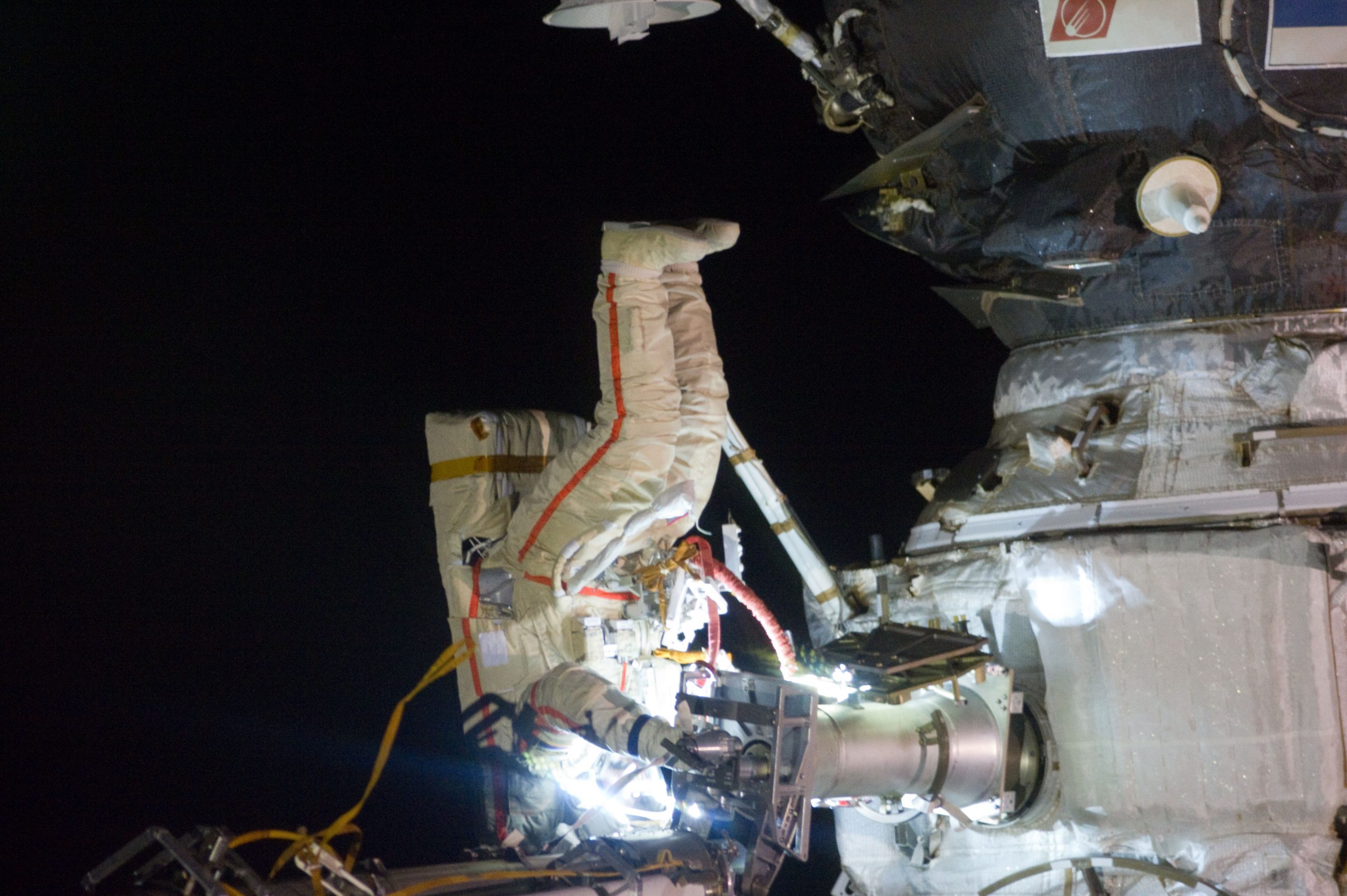The coolest part of space flight has got to be the weightlessness—but it’s also the most problematic. Under zero-g, muscles atrophy, heart rate changes, blood pressure increases, and bones demineralize by 1% to 2% for every month of space flight. With some astronauts remaining aloft for a year or more, that’s an awful lot of potential damage. Exercise helps; astronauts aboard the International Space Station (ISS) are required to spend two hours a day on the treadmill and stationary bike. But that’s still not enough to reverse the problem. And it’s not just zero-g that can be hazardous. Long-term stays in the reduced gravity of the moon or Mars could have similar ill effects.
[time-brightcove not-tgx=”true”]
“When I landed from space I had to be carried out of the capsule and went about my first few days on Earth looking like a 90-year-old,” says retired astronaut Kate Rubins, who served two tours of duty aboard the ISS for a total of 300 days in space. “Many of my physiologic systems replicated somebody who’s 20 or 30 years older than me.”
Now there may be a solution: robot pants. As a new study in Advanced Science reports, a team of investigators led by Emanuele Pulvirenti, research associate at the University of Bristol’s Soft Robotics Lab in the U.K., have developed a garment that can be worn under spacesuits to provide some of the resistance felt in a gravity environment, keeping the body functioning as if it were back on Earth.
The pants, which run from waist to knee, are made of two parts: an outer nylon layer and an inner, airtight plastic one. At the front and back of both knees are a pair of so-called bubble artificial muscles (BAMs), made of plastic tubing and retaining rings that can be inflated with air to provide pressure on the real muscles underneath. BAMs have been used in the past to support the muscles of the wearer, helping soldiers carry heavy packs or people with disabilities regain lost mobility. In the current study, however, Pulvirenti and his colleagues positioned the units in spots that would actually make it a bit harder for wearers to move, leading to a continuous low-level exertion that would have some of the health benefits of gravity.
To test the system, Pulvirenti and his team traveled to the University of Milan, home to the L.O.O.P. (Locomotion On Other Planets) lab, built and operated by the European Space Agency. The L.O.O.P. is equipped with a harness system that can tug subjects gently upward, recreating the reduced one-sixth gravity of the moon or the 38% gravity of Mars. The team recruited six subjects—four men and two women—with a median age of just under 31, and put them through paces with the L.O.O.P. and the robot pants. Sensors were positioned over seven muscles in their legs and a mask was placed over their mouths that collected exhaled breath and measured respiratory gasses, pulmonary ventilation, oxygen consumption, and carbon dioxide production.
The subjects then climbed aboard a treadmill and walked for four minutes under each of six conditions: without the robot pants, with the robot pants but without the BAMs uninflated, and with the BAMs inflated. They first performed all three exercises without the harness, under the Earth’s one-g gravity field, and then with the harness attached to create simulated one-sixth lunar gravity. What the investigators were looking for was increased activity in the seven leg muscles, and a boost in metabolic activity, indicating that the body was exerting itself. The results were striking.
When the subjects were under earthly gravity, walking with the BAMs uninflated, they experienced an 18.2% increase in metabolic activity, showing that just the presence of the BAMs was enough to affect gait and exertion, causing the wearers to work harder. When the BAMs were inflated, the metabolic rate jumped 20.1%. Under the simulated lunar gravity, metabolism rose 20.1% with the BAMs uninflated and 29.3% with them inflated. At the same time, leg muscle activation increased by 13.9% to 87%, depending upon which muscle was being measured.
“I would love to continue developing this technology so that it could eventually be tested at the International Space Station,” Pulvirenti said in a statement that accompanied the release of the study.
What works off the planet could work on it as well, helping injured or disabled people regain strength and motion. “This exosuit is assistive, meaning it artificially boosts the lower-limb muscles, but we have also separately developed a resistive exosuit, which applies load to the body to help maintain muscle mass,” says Pulvirenti. “Our next goal is to create a hybrid suit that can switch between assistance and resistance … which could be of great benefit for people in need of support with mobility going through physical rehabilitation.” It may be years before we get to the moon and decades before we make it to Mars, but the exosuit is already ready to do its job here on Earth.

